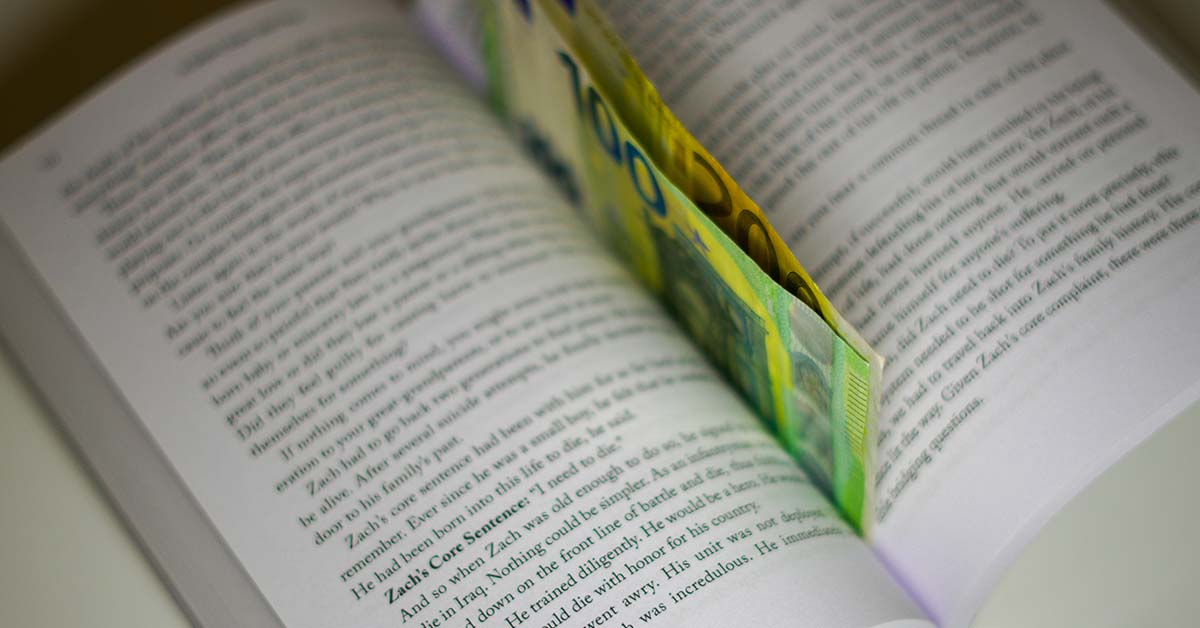Talking about money with kids isn’t always easy. In fact, over half of parents feel nervous about it. Around 57% say they hesitate to discuss money with their children.
Another survey showed that 74% of people think parents shouldn’t talk about their kids’ finances until they’re at least 14, and 14% believe parents should never bring it up.
But here’s the good news: there are many great books that can help. These books make it easier for parents to start conversations about money. Reading them together can also help families talk about tricky topics, like losing a job or not being able to afford something a child wants.
| Disclosure: This post may contain affiliate links and advertisements. We may earn a small commission or advertising fee at no extra cost to you. Learn more in our full disclaimer. |
Here are some of the best books to help kids learn about money and build smart habits:
1. What is Money? Personal Finance for Kids by Kelly Lee
It’s never too early to teach kids about money. Experts at Cambridge University suggest starting as young as 3. This book is perfect for kids ages 3 to 6.
Through short stories, colorful pictures, and simple words, it shows kids where money comes from and why saving matters. It even has fun activities at the end.
2. The Four Money Bears by Mac Gardner
Meet four friendly bears: Saver Bear, Spender Bear, Investor Bear, and Giver Bear. This book, for ages 3 to 7, teaches kids how these bears work together to manage their money and create a budget.
Kids learn smart money habits by following their adventures. At the end, there’s even a guide for kids to build their own budget.
3. Money Math: Addition and Subtraction by David A. Adler
Before kids can handle money, they need to know what it is. This book introduces coins and dollar bills while teaching basic math.
Kids discover who’s on the money and what it’s worth. As they practice counting and adding, they’ll learn to figure out change and how long it takes to save up.
4. Investing for Kids: How to Save, Invest and Grow Money by Dylin Redling & Allison Tom
This book, made for ages 8 to 12, helps kids understand how to earn, save, and grow their money.
With help from fun characters like Mr. Finance and Investing Woman, kids learn about stocks, bonds, risks, rewards, and how to build wealth by investing wisely.
5. A Boy, a Budget, and a Dream by Jasmine Paul
Kass is great at saving, but her brother Joey struggles. When Joey wants something he can’t afford, he has to decide: budget or give up his dream?
This story, for ages 4 to 8, teaches kids how to save, ask for help, be patient, and understand money in a fun, easy way.
6. If You Made a Million by David M. Schwartz
This award-winning book uses a friendly magician, Marvelosissimo, to explain how money adds up—from one penny to a million dollars.
Kids aged 4 to 8 learn about banks, saving, and loans. It even shows how interest works and how money grows over time.
7. Money Plan by Monica Eaton
Mia learns about saving and budgeting during a trip to the store. This book, for ages 4 to 7, helps kids understand the difference between needs and wants, spending and saving.
It includes a free teaching guide so parents can keep the conversation going.
8. Finance 101 for Kids: Money Lessons Children Cannot Afford to Miss by Walter Andal
Kids start forming money habits by age 7, so this book comes at the right time.
Walter Andal wrote it to help kids understand how to make smart money choices in everyday life. There’s even a second book, Finance 102 for Kids, for those who want to learn more.
9. Rock, Brock, and the Savings Shock by Sheila Bair
Twin brothers Rock and Brock have very different habits. Their grandpa pays them for chores and promises to double any money they save. Brock saves and ends up with $512, while Rock spends all his cash.
This rhyming story teaches kids how saving and compound interest work. An easy-to-follow chart at the end shows how Brock’s savings grew.
10. The Everything Kids’ Money Book by Brette Sember
This book helps kids learn how to save for things they want, invest their allowance, and understand how money works today—from coins and bills to online banking and digital wallets.
It covers credit cards, saving strategies, and even how kids can start small businesses or invest smartly.
11. I Want More Pizza by Steve Burkholder
Perfect for teens who don’t like long books, I Want More Pizza uses pizza as a fun way to explain money basics.
It’s short and easy to read but packed with useful lessons about setting goals, saving, and investing to help teens become financially independent.
12. Rethink Money: for Children & Teens by Paul O’Mahony & Chris Farrell
This free book, with over 300 pages, teaches kids how to build wealth and think like entrepreneurs.
It encourages kids to start early and think big—whether they want to open a lemonade stand or invent the next big thing.
FAQs
Why should kids learn about money early?
Even little kids notice money and ask questions. Advertisers start targeting kids as young as 2. Teaching them early helps them understand that money isn’t just for buying toys—it can do a lot more.
How can I help my child set their first financial goal?
Start small. A good first goal is saving $5 a week for 10 weeks to buy a toy. Keeping the goal short and fun keeps kids interested.
What if I’m nervous about teaching my child about money?
Begin with the basics:
– Know the difference between needs and wants.
– Practice smart spending.
– Set small savings goals.
Kids watch and learn from what adults do, so even simple steps help.
How do I teach my child to budget?
Show them how to balance saving and spending. Give them an allowance and let them decide how to use it—but once it’s gone, it’s gone. They’ll quickly learn how to make smart choices.
Is opening a savings account for kids a good idea?
Yes! Watching savings grow is exciting. Even better, think about starting an investment account when they’re young so their money can grow over time.


